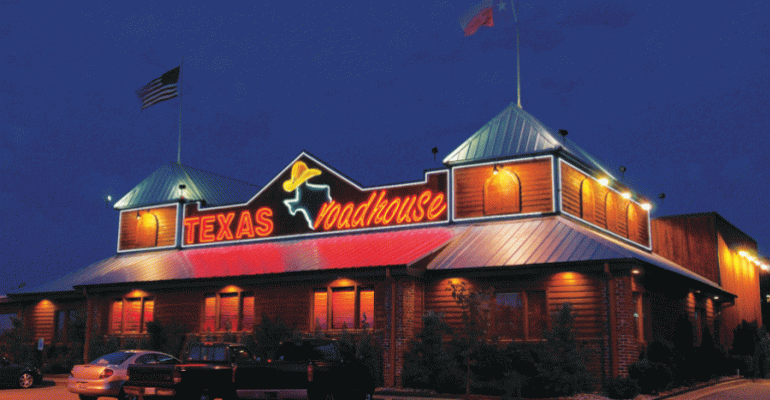Like most casual dining chains, Texas Roadhouse shifted heavily to off-premises business during the throes of the pandemic. Also like most casual dining chains, the chain has maintained much of that business despite the return of dine-in business.
The chain’s carryout/curbside business has held steady near 20% in many locations across the system. That’s a welcome revenue stream to be sure, but it can also pose operational challenges. And for Texas Roadhouse, it can also compromise some control over its signature mission of “legendary food, legendary service.” To gain some of that control back, the chain has rolled out Yumpingo’s customer experience management software across its system after a successful year-long test. The platform simply triggers a survey after each online order – via app or web – so customers can provide real-time feedback about their experience and food quality beyond restaurants’ four walls.
Eduardo Garcia, a longtime Texas Roadhouse operator based out of West Palm, Florida, was an early adopter of the platform who was willing to test its effectiveness as his restaurant’s carryout business “exploded.”
“It is now a big part of our business, and we want to maintain and continue to grow it and to do that, we need to get better at it. That’s where this data comes in,” Garcia said during an interview this week. “In the dining room, the manager touches all of our tables and gets immediate feedback from our guests. This technology opens the door to do that with our to-go business.”
According to Texas Roadhouse CIO Hernan Mujica, that immediate feedback piece is critical to translate good service to off-premises dining. Every to-go guest receives the survey and about 7% respond, which is in line with other concepts that use such a service. That feedback is accessible about a half hour after it’s submitted.
“Preserving and retaining our to-go guests are now huge parts of our business. We can deal with feedback in restaurants on the spot. With to-go, once they leave, we lose that connection. This data changes that and helps us get better,” Mujica said.
The data also shows that customer preferences vary by market. So in some markets, Garcia has added more curbside spots, for instance, while in others, he’s added more employees to the cash register.
It’s worth noting that Texas Roadhouse is relatively conservative with new technologies. The chain doesn’t deliver, for instance, and it relies on old-fashioned mystery shoppers for much of its in-store feedback. That said, the chain also recently rolled out a pay-at-the-table platform, called Roadhouse Pay, which is now systemwide and used by about 80% of dine-in guests who use credit cards. Those guests have largely provided positive feedback about the easier and faster experience Roadhouse Pay provides. Garcia said it’s also saved employees’ time, even though these solutions aren’t intentionally implemented to save on labor, as has been common throughout the industry.
“We really haven’t focused on (labor saving technologies). We are still dedicated to three-table stations and manning those tables. Labor is not a focus of these initiatives,” Mujica said. “What is a focus is making the guest happy and making our employees happy.”
Contact Alicia Kelso at [email protected]

